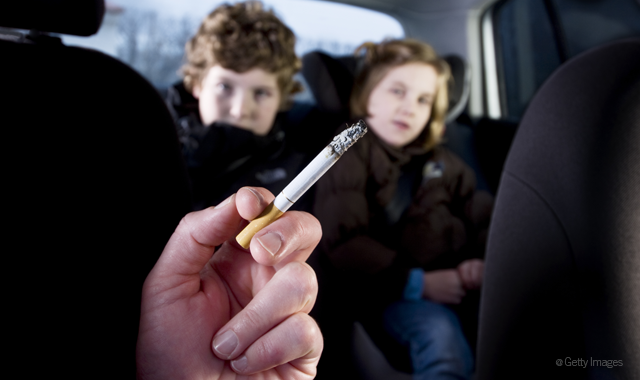Study finds secondhand smoke exposure linked to increased dental decay in children
It’s a no brainer that smoking is bad for your health, and the health of those subjected to your secondhand smoke. Now, researchers say that secondhand smoke can have even more detrimental effects than previously believed – on the dental health of children.

It’s a no-brainer that smoking is bad for your health, and the health of those subjected to your secondhand smoke. Now, researchers say that secondhand smoke can have even more detrimental effects than previously believed – on the dental health of children.
As part of a recent study, researchers in Japan investigated the effects of smoking during pregnancy, as well as the effects of secondhand smoke on infants and small children, to see if exposure to smoke could increase risk for caries in deciduous teeth.
Related reading: New study shows smokers are at higher risk of losing teeth
Parents of the more than 76,000 children who participated in the study were asked to fill out questionnaires detailing the amount of secondhand smoke exposure their children experienced from pregnancy to four months old. The children attended health checkups at birth, four, nine and 18 months and at three years of age. Dental caries was assessed at 18 months and three years. For the purpose of the study, dental caries was defined as at least one filled, decayed or missing tooth.
During the study, 12,729 incidents of dental caries were recorded. Researchers noted that four-month-old babies that had been exposed to tobacco smoke were two times as likely to have caries than children in a non-smoking home. The effect of maternal smoking during pregnancy was not statistically significant, and did not show a remarkable difference.
Trending research: Study finds children of stressed mothers are more likely to develop cavities
“Differences in behavior patterns were also apparent between those exposed to and not exposed to smoking, such as lack of tooth brushing and irregular consumption of sweets,” the study stated. As such, the study could not definitively determine causality of the increased rate of dental caries in children constantly exposed to smoke versus those who were not, as other factors could come into play.
Continue to page two for more...
Still, researchers wrote, “exposure to secondhand smoke at four months of age, which is experienced by half of all children of that age in Kobe City, Japan, is associated with an increased risk of caries in deciduous teeth. Although these findings cannot establish causality, they support extending public health and clinical interventions to reduce secondhand smoke.”
This study coincides with other recent news regarding children and secondhand smoke. As of October 1, 2015, smoking in vehicles with anyone under the age of 18 is illegal in England and Wales. The British Dental Health Foundation believes this ban will have a profound effect on children’s dental health, as it will limit secondhand smoke exposure in enclosed vehicles.
Trending article: The importance of oral cancer screening in the dental practice
“Research has shown that a single cigarette smoked in a car with closed windows produces 11 times higher levels of secondhand smoke than in an average bar where smoking is permitted,” said Dr. Nigel Carter, OBE, chief executive of the British Dental Health Foundation in a recent press release. “This is extremely dangerous to anyone within that car, especially children whose dental health is still developing.”
Smoking has been banned in workplaces and enclosed spaces in Britain since 2007. Under the new ban, both the driver and the person smoking in the car could be issued a £50 fine for the violation.
The Japanese study, "Secondhand smoke and incidence of dental caries in deciduous teeth among children in Japan: Population based retrospective cohort study," was published in the medical journal The BMJ.
Floss & Flip Flops Episode 14: Children's Dental Health Month with Irene Iancu
February 1st 2023The Sanders Sisters invite Irene Iancu, RDH onto the microphone to discuss Children's Dental Health Month, discussing the importance of prevention, counseling and patient-centered care for our pediatric patient population.